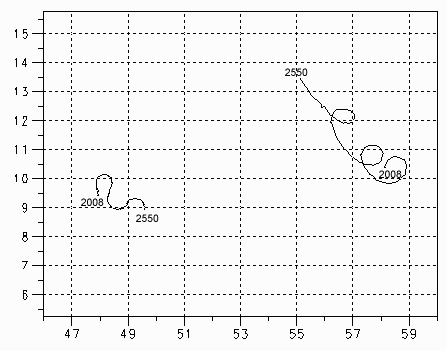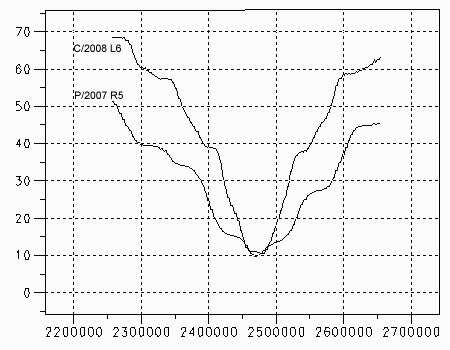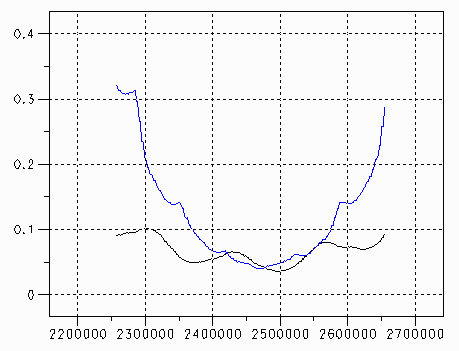
On the Orbital Evolution of P/2007 R5 and C/2008 L6
This page is inspired by "On the Association among Periodic Comet 96P/Machholz, Arietids, the Marsden Comet Group, and the Kracht Comet group" (K. Othsuka, S. Nakano, M. Yoshikawa, Publ. Astron. Soc. Japan, 55, 321-324, 2003 February 25). The authors of this paper use the D-criterion by Southworth and Hawkins (1963) to investigate orbital similarities. They write that "D<=0.2 means both orbits are within a possible association range".
I found the D Criterion (for low-inclination orbits) here: http://adsabs.harvard.edu/full/1971psmp.coll..337L (page 338) and applied it to the orbits of P/2007 R5 and C/2008 L6. The result for the epoch 2008 June 23.0 is D(M,N) = 0.175. So we have a possible association of these Kracht2 comets. But the association is not very close. By far the most contribution to D(M,N) comes from the different heliocentric longitudes of the perihelia of both comets.
I have integrated the orbits of both comets with SOLEX with output every 2000 days and with 100 steps backwards and forwards (that is from years 1466 to 2550). The angle between the lines of apsides decreases from 16.1 deg (1466) to 10.3 deg (2008) to 7.2 deg (2550).

The heliocentric longitudes and latitudes( in degree) of the perihelia of P/2007 R5 (left) and C/2008 L6 (right) for the years 2008 to 2550.
The line of apsides of C/2008 L6 seems to be
much more perturbed than the line of apsides of P/2007 R5. While
the longitudes of perihelion close in, the latitudes of
perihelion diverge (mainly from the perturbations of C/2008 L6).
The D Criterion for low-inclination orbits is not useful for a
comparison over a longer time span, because the orbits evolve
from high inclinations to low inclinations and back to high
inclinations:

The orbital inclinations (in degree) of of P/2007 R5 and C/2008
L6 for the years 1466 to 2550.
Both comets are now close to their minimum
inclination but have had much greater inclinations in the past
(and would again attain much greater inclinations if they would
survive).
Their survival depends on the perihelion distances:

The perihelion distances (in au) of P/2007 R5 (black) and C/2008
L6 (blue) for the years 1466 to 2550.
The perihelion distance of P/2007 R5 is 0.1 au or less all the time.